Gemini Springs seems like a good example of the opposite of Juniper Spring. Gemini is a bit of an urban spring, surrounded by a park. Its flow originates from two small springs that discharge into a short sandy run. That run was dammed in the 1970s to create a large pool for swimming and, although swimming was stopped in the early 2000s, the pool is still there. Even below the dam, the spring has a short run that flows through a wide marsh into Lake Monroe.
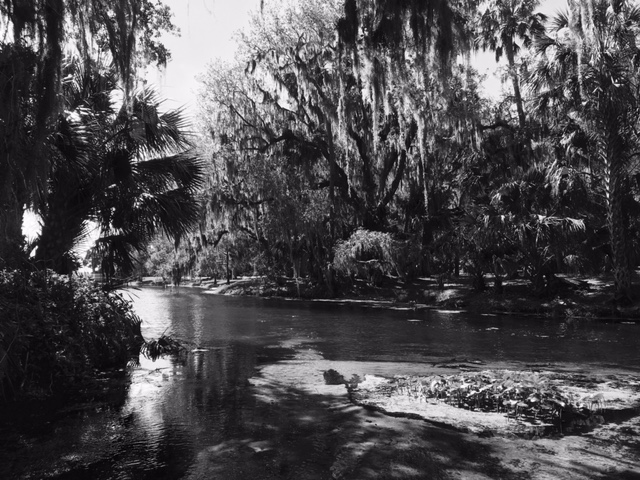
Looking down from Gemini Springs run into the pool
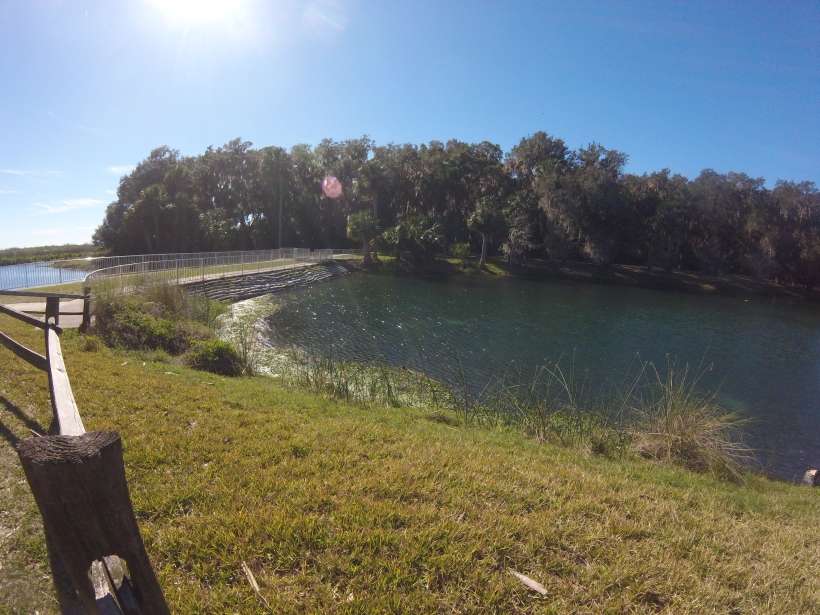
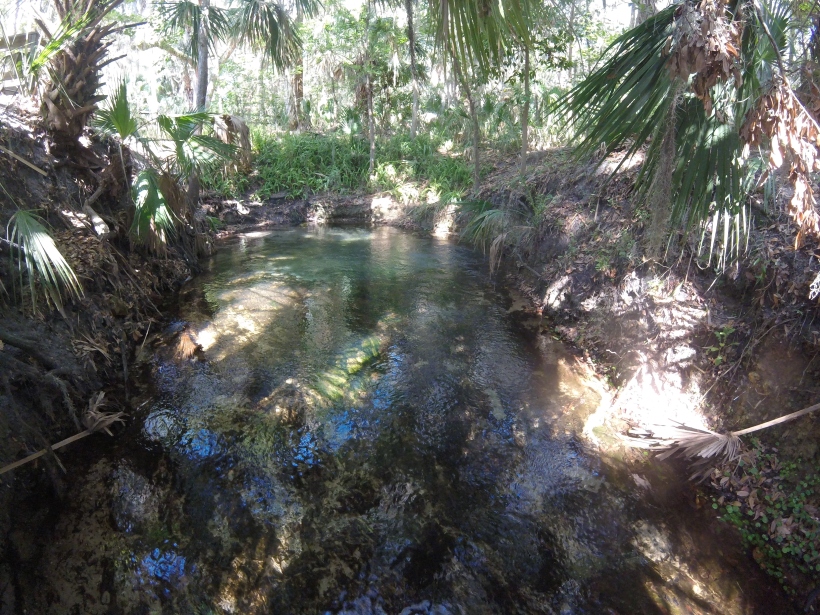
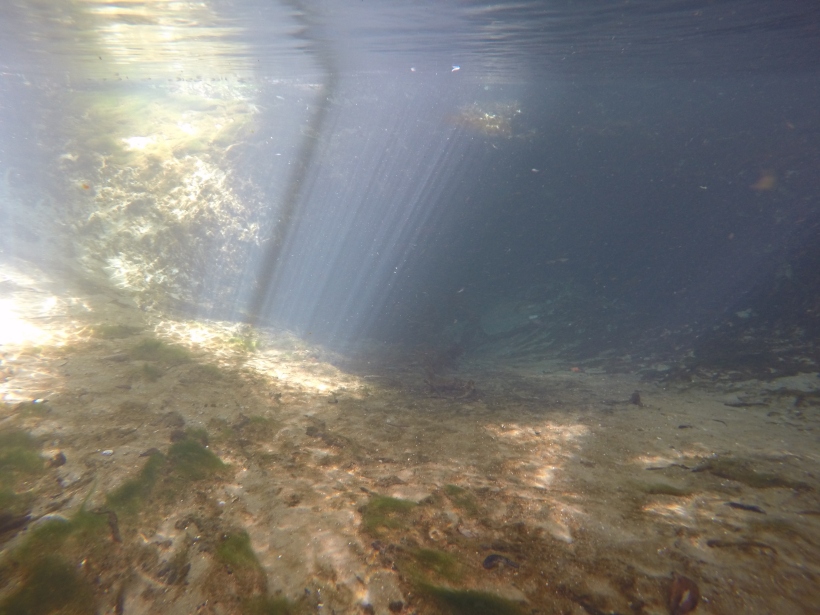
Above and below water views of the Gemini I.
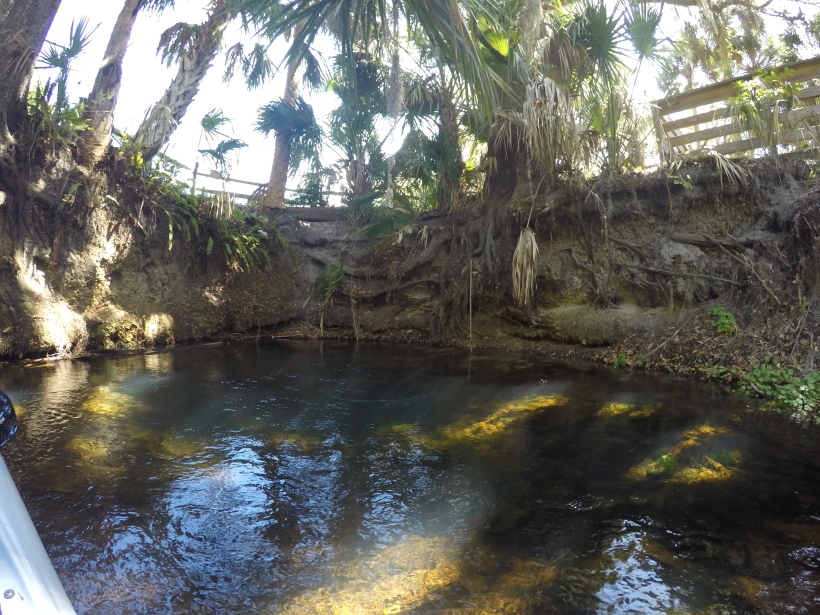
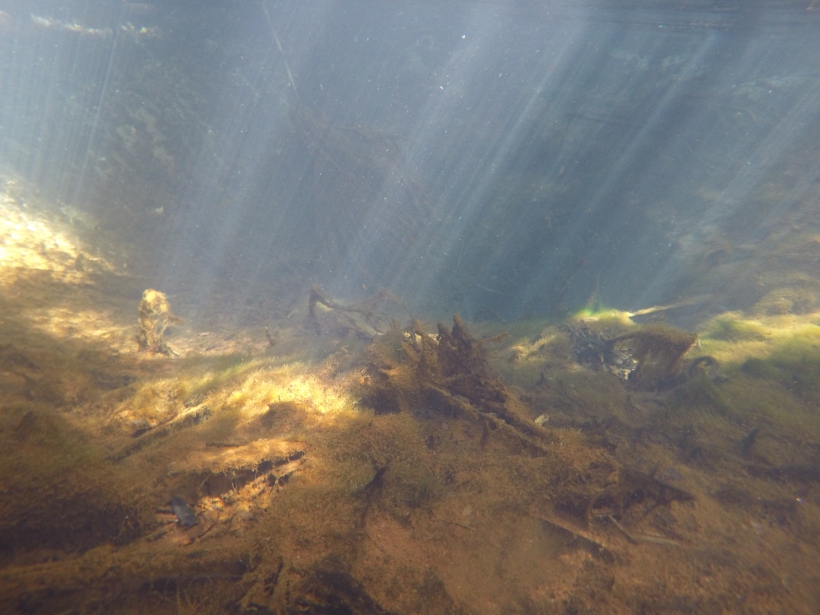
Above and below water views of Gemini II.

Google Earth image of the largely urban landscape around Gemini Springs.
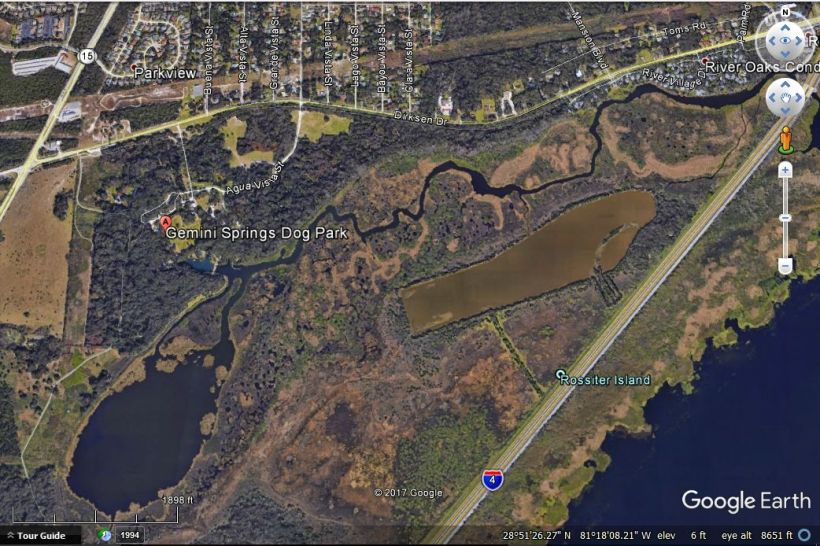
The dam is visible, as is a difference in the color of the water, in this closer image from Google Earth.
The discharge of Gemini Springs is lower than any other spring that I visited; it is naturally low as the springs are small. Although the discharge is low, the water is rather salty (conductivity = 2320 micromhos/cm); the only spring on the St. Johns River that has higher conductivity is Salt Spring (conductivity = 5800 micromhos/cm). The nutrient concentrations, as one might expect for an urban spring, were moderately high (nitrate = 1.2 mg/L, phosphate = 0.08 mg/L). I recorded no plants in the run except for cattails and some other emergent plants below the dam. There was a fair amount of algae both above and below the dam.
Despite the urban setting, the low discharge, and the relatively high nutrient concentrations, I measured the second highest fish species richness at Gemini Springs of all the springs that I visited (19 species); only Volusia Blue Spring (25 species) was higher. The fish diversity was a bit lower because diversity was fairly low above the dam, not surprisingly, but higher below the dam. I added many species to the list in the run below the dam. Gemini Spring also provided me with my favorite video ever.
The images were very different near Gemini I, in the pool, and below the dam.

Sailfin mollies (Poecilia latipinna) and mosquitofish (Gambusia holbrooki) in a side pool near Gemini I. The fish in the middle of the group of four on the right is a male molly in breeding colors. His dorsal fin is much larger than the females’ dorsal fins.
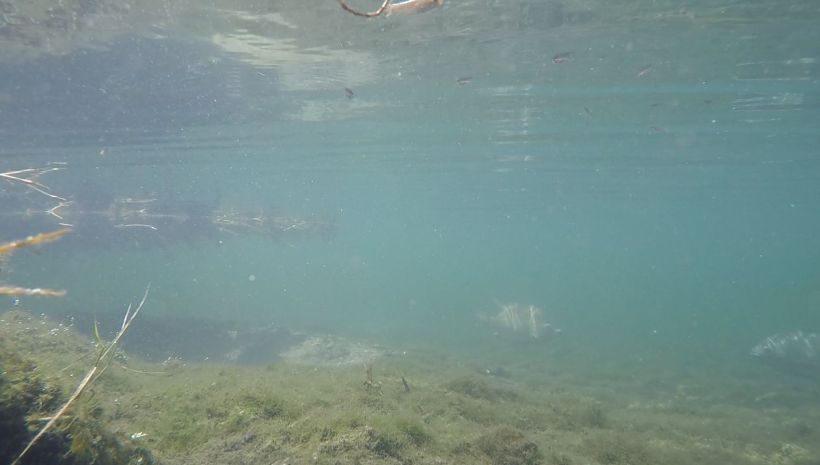
Exotic blue tilapia (Oreochromis aureus) in the pool above the dam. The fish in the middle of the image just left its nest, which is the big hole on the left side of the photo. There are also some mosquitofish up at the surface.
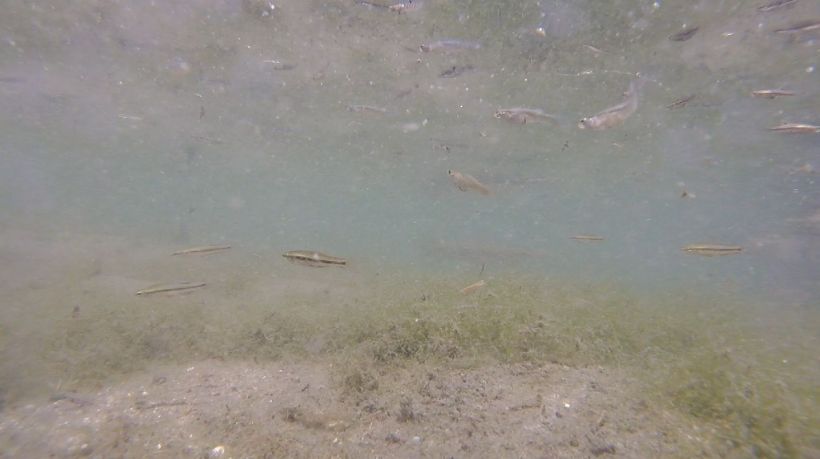
Gemini Springs run in the marshy area below the dam. This photo may not look that much clearer than the photo from the pool, but there are actually five different species in the photo: mosquitofish, sailfin mollies, bluefin killifish (Lucania goodei), least killifish (Heterandria formosa), and a Florida gar (Lepisosteus platyrhincus). At other times in the video, there are rainwater killifish (Lucania parva), flagfish (Jordanella floridae), and largemouth bass (Micropterus salmoides).
Given that the diversity was so high below the dam and that I average the data above and below the dam to represent the entire spring (as I did for all springs), I think that the diversity of Gemini Spring would be higher if the dam were not there.
Here is my absolute favorite video from the whole survey:
A Florida gar doing a drive by of the camera.
I also saw a bunch of armored catfish (Pterygoplichthys disjunctivus or P. multiradiatus) that freaked out before I could get close to them. Mostly I saw a poof in the fluff on the bottom of the spring run. That fluff was thick.

Sediment stirred up by an armored catfish freaking out.